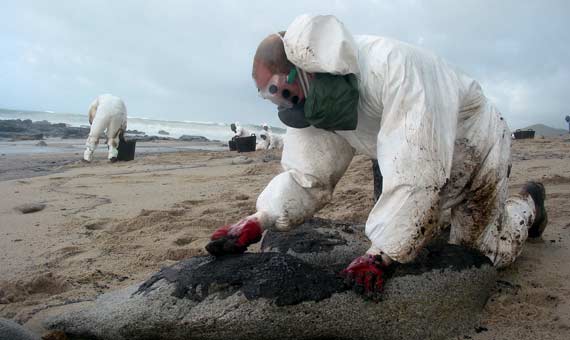We are living at a critical time, both for humanity and the whole planet. The need to protect and to seek more sustainable formulas for interacting with the environment, became clear at the COP21 climate change conference. The meeting, held in Paris in December 2015, confirmed the importance of fighting against global warming, an effort in which technology and the so-called circular economy will play a key role.

In addition to improving the efficiency of linear production processes, the circular economy aims to reuse elements that are traditionally considered waste. The goal of this sustainable development strategy is to produce goods and services while reducing raw materials, water and energy consumption and waste. One aspect is the bioeconomy, in which either living organisms or their parts are used to help the environment – which can contribute to our growth. According to European Union calculations, every euro invested in R&D&I in the bioeconomy, funded at community level, will generate ten euros of added value in 2025. This data supports scientific and technical strategies that will not only improve employment figures, but could also help save the environment.
Agriculture, biofuels and energy
The technology applied in agriculture is one great example. The development of improved crops, boosted in recent decades by sufficient scientific evidence to support its usefulness and safety, shows how biotechnology can produce crops which are resistant to climate change. In addition to initiatives such as vitamin A-enriched golden rice, scientists have been able to create other varieties of rice which are resistant to flooding. It is not the only alternative that will allow us to adapt to the changing weather conditions caused by global warming. Recently, the European Union claimed they would support a research study aimed at developing drought-tolerant cereal, which will be directed by a team led by Dr. Ana Cano Delgado from Barcelona’s CRAG-CSIC. Floods, drought and other hazards such as wildfires are some of the problems that climate change will exacerbate, especially in the poorest regions.
The future will not only be marked by our ability to evolve and adapt to change. Among the technologies that will save the environment, electric cars and biofuels play a special role. The term “green cars” is not only restricted to the electric type, but also includes cars that consume less to travel the same distance, hybrid vehicles, and many others. Moving towards a new culture in this industry is essential, since, for example, in the United States alone, car, bus, motorcycle and truck trips cover an annual distance equivalent to making 13,440 round-trips to the Sun, according to the US Environmental Protection Agency.

And while we are still seeking alternatives to conventional vehicles, in order to reduce consumption of oil and fossil fuels, renewable energy is appearing on the horizon as a key pillar of our development. This includes biofuels, an alternative to traditional fuels generated from the biomass of living organisms or their metabolic waste. Research studies today are focusing on taking particular advantage of crop waste, such as sugar cane or corn, with the aim of promoting the circular economy.
Biotechnology
Biofuel production is a solution that facilitates the use of biotechnology for environmental purposes. But it is not the only one. Environmental disasters such as the sinking of the Exxon-Valdez and the Prestige were the catalyst for scientists to implement pioneering technologies for cleaning oil-contaminated environments. The use of microorganisms for these tasks is called bioremediation, and it employs bacteria or fungi to decontaminate waste water from cities. These alternatives show that “living” technology will be crucial in promoting sustainable development.

And in order to ensure sustainability, we should not forget to mention innovation in new materials. Some of these, such as biomaterials used to “store” carbon dioxide, can help to reduce the greenhouse effect and global warming. Others, such as banana blades, manufactured in Mexico for construction, increase the chance of eliminating toxic compounds such as asbestos, which is related to increased risks of cancer.
Research, as well as scientific and technical innovation, will be critical to saving the environment, reducing the impact of global warming, helping in adapting to climate change, cleaning up polluted areas and taking care of our own health. The examples mentioned above show that science and technology will be better prepared to meet the challenges of the future. In addition, overcoming these challenges will allow us to move towards a different economy, an environment-friendly one that generates qualified employment.
Comments on this publication